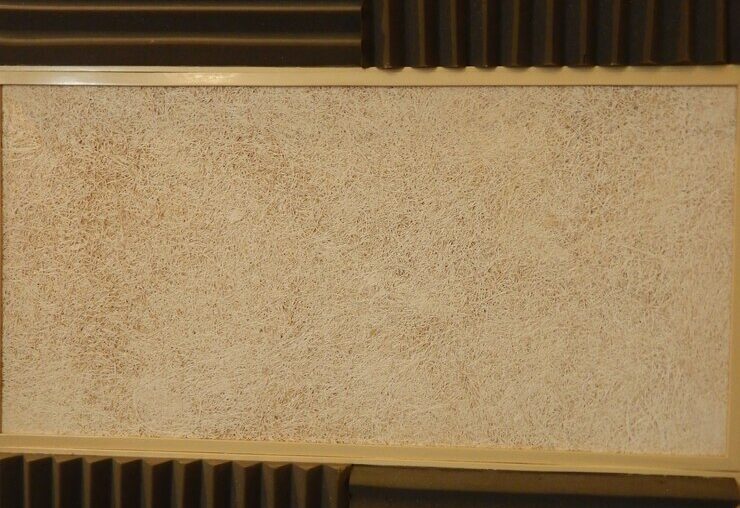Healthcare facilities, such as hospitals, clinics, and nursing homes, often face high noise levels that can disrupt patient care and affect staff productivity. From the constant flow of people and equipment to the sounds of machines and conversations, noise in healthcare settings can be overwhelming. One effective solution to combat noise pollution is the installation of sound absorbing panels. These panels play a crucial role in improving the acoustic environment, promoting patient comfort, and enhancing overall healthcare experiences. This article explores the benefits and key considerations of installing sound absorbing panels in healthcare facilities.
Benefits of Sound Absorbing Panels in Healthcare Facilities
1. Improved Patient Comfort and Recovery
In healthcare environments, particularly in patient rooms, a quiet atmosphere is vital for recovery. Noise can interfere with patients’ ability to sleep, leading to increased stress and delayed healing. Sound absorbing panels help reduce the noise levels by absorbing sound waves rather than allowing them to bounce off hard surfaces like walls and floors. By minimizing distractions and noise, these panels create a more serene and restful environment, which contributes to faster recovery and overall patient satisfaction.
2. Enhanced Privacy for Patients and Staff
Confidentiality and privacy are critical in healthcare settings, where sensitive conversations between healthcare professionals and patients take place regularly. Excessive noise in waiting rooms, hallways, or even patient rooms can compromise privacy, as conversations may be overheard. Sound absorbing panels effectively reduce sound transmission between rooms and corridors, ensuring that private discussions remain confidential. This enhances trust between patients and healthcare providers and supports the ethical standards of the healthcare industry.
3. Reduced Stress for Healthcare Workers
Healthcare workers often operate in high-stress environments, where clear communication and focus are essential. Noise distractions can affect their ability to perform tasks efficiently and with precision. By installing sound absorbing panels, healthcare facilities can create quieter spaces for staff, reducing stress and increasing focus. A quieter environment also minimizes the risk of errors caused by miscommunication or distraction, ultimately improving the quality of care provided to patients.
4. Noise Control in Common Areas
Busy common areas such as waiting rooms, cafeterias, and emergency rooms are often filled with noise from people talking, phones ringing, and equipment operating. These high noise levels can cause discomfort and frustration for both patients and visitors. Sound absorbing panels are ideal for these spaces, as they help reduce ambient noise and improve sound clarity. This not only enhances the experience for patients but also creates a more pleasant environment for visitors and staff.
5. Compliance with Health and Safety Regulations
Many healthcare facilities are subject to noise regulations to ensure the safety and comfort of patients and staff. Excessive noise can lead to stress-related illnesses and can even affect a patient’s vital signs. Installing sound absorbing panels helps healthcare facilities meet noise control standards, ensuring compliance with local health and safety regulations. In addition, these panels can improve the facility’s overall design and functionality, supporting the facility’s commitment to providing a high standard of care.
Key Considerations for Installing Sound Absorbing Panels
While the benefits of sound absorbing panels in healthcare facilities are clear, there are several important factors to consider during the installation process to ensure maximum effectiveness.
1. Material and Aesthetic Choices
When choosing sound absorbing panels for healthcare environments, it is important to select materials that are both effective at sound absorption and suitable for the space’s aesthetic. Panels made from fabric-wrapped fiberglass, acoustic foam, or mineral core materials are popular choices for healthcare settings. These materials are not only efficient in absorbing sound but also come in various colors and designs that can complement the interior décor of healthcare spaces.
Moreover, since healthcare facilities often have specific design requirements, it is essential to work with manufacturers or installers who can provide custom solutions. For example, sound absorbing panels can be integrated into ceilings, walls, and even furniture to maintain a clean, professional appearance while maximizing acoustic benefits.
2. Durability and Maintenance
Healthcare facilities experience high foot traffic and the use of cleaning products that may affect the durability of sound absorbing panels. It’s crucial to select panels made from materials that are easy to maintain and resistant to moisture, stains, and bacteria growth. Acoustic panels that are coated with antimicrobial treatments or feature washable surfaces can ensure long-lasting performance and hygiene in healthcare environments.
Additionally, consider panels that are durable enough to withstand constant cleaning without losing their sound-absorbing capabilities. This ensures that the panels remain effective in controlling noise for years to come.
3. Strategic Placement
For optimal performance, sound absorbing panels must be strategically placed throughout the healthcare facility. It is important to target areas where noise levels are highest or where sound reverberation is most problematic. In patient rooms, placing panels on the walls and ceilings can help reduce noise from nearby hallways and other rooms. In common areas, such as waiting rooms or cafeterias, panels can be placed on walls, ceilings, or even as free-standing partitions to reduce noise and enhance the space’s acoustics.
Professional acoustic consultants can assess the space and recommend the best placement of panels to ensure maximum sound absorption and optimal results.
4. Cost-Effectiveness
Budget considerations play a significant role in any construction or renovation project, including the installation of sound absorbing panels. While these panels are an investment in the overall quality of the healthcare environment, they can be cost-effective in the long run. By reducing noise pollution, these panels can contribute to improved patient outcomes, reduced stress for staff, and a better overall experience for visitors. Moreover, they can help prevent costly issues related to patient dissatisfaction or healthcare worker burnout, making them a valuable investment for healthcare facilities.
5. Acoustic Testing and Compliance
Before installing sound absorbing panels, it’s important to conduct acoustic testing to determine the specific needs of the space. Acoustic professionals can perform sound measurements and determine the optimal panel specifications to ensure the panels perform effectively. This testing will also help ensure that the panels meet any noise-related regulations for healthcare environments.
Read also: Pacorr’s Box Compression Tester: The Key to Optimizing Your Supply Chain Efficiency
Conclusion
The installation of sound absorbing panels in healthcare facilities provides a wide range of benefits, from improving patient comfort and confidentiality to reducing stress for healthcare workers and ensuring compliance with noise regulations. By carefully considering factors such as material selection, durability, placement, and cost, healthcare facilities can create a quieter, more comfortable environment for patients, staff, and visitors. The right sound management strategy, including the use of sound absorbing panels, is essential for enhancing both the acoustics and the overall experience in healthcare settings.



